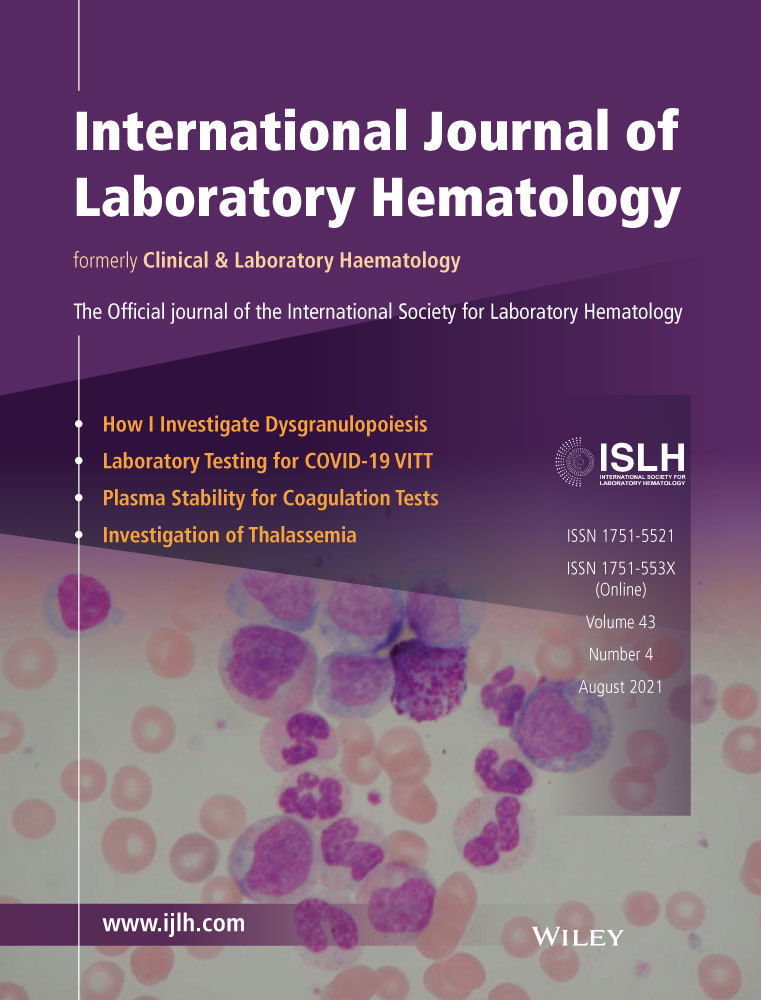Cell count-based parameters and algorithms for thalassaemia trait screening in the southern Chinese population
Abstract
Introduction
Thalassaemia trait (TT) is potential to be missed clinically, especially normocytic thalassaemia. We aimed to establish discriminant functions (DFs) and an algorithm for detecting microcytic or normocytic TT in epidemiological screening.
Methods
The receiver operating characteristics (ROC) curve analysis was used to determine the diagnostic performance of the proposed formulas in differentiating TT and nonthalassaemia (non-TT). DFs combined the two blood count parameters with the highest performance, based on the area under the curve (AUC) value, into mathematical formulas, using logistic regression. The diagnostic efficacy of DFs was subsequently evaluated in 761 participants, and reliability (including adjusted agreement [AA] and Kappa values) and validity (including sensitivity, specificity, likelihood ratio and Youden's Index) were calculated.
Results
Among microcytic participants, the proposed DFs showed good diagnostic performance (in females: AUC = 0.892 [DF1 = 0.015 × RDW-CV/RBC − 0.096 × RDW-SD/RBC + 1.29], in males: AUC = 0.861 [DF2=−0.025 × RDW-SD/RBC − 0.035 × MCV/RBC + 1.415]). Youden's Index, AA and Kappa values for microcytic TT detection were 0.72, 0.86, and 0.72 and 0.63, 0.81 and 0.63 for females and males, respectively. In normocytic participants with RDW-CV/RBC ≤ 3.54, DF3=−0.38 × MCH−0.02 × MCHC+17.37 achieved AUC = 0.857 in females, whereas DF4 = 0.007 × MCV−0.113 × MCH+2.829 achieved AUC = 0.969 in males. The Youden's Index, AA and Kappa values for the proposed DFs for thalassaemia detection were 0.69, 0.84 and 0.67 in females, 0.76, 0.91 and 0.71 in males, respectively.
Conclusion
The proposed DFs performed well in the detection of TT among participants with microcytic and normocytic parameters and could be utilized in epidemiological study for TT.
CONFLICT OF INTEREST
The authors declare they have no conflicts of interest.




